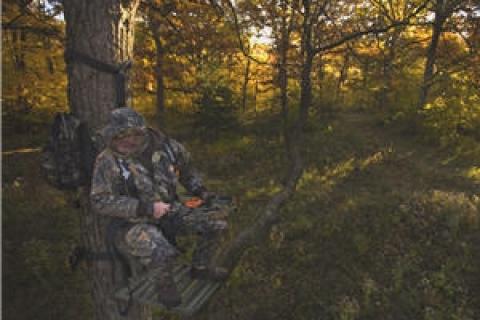
For deer hunters, the wind can be a source of frustration, especially when it suddenly changes directions. But, the wind can blow some benefits your way as well.
 |
| A blustery wind can be a hassle. But it also concentrates deer in pockets out of the wind, meaning you have a lot less ground to cover to find mature bucks. |
All in all, though, the negatives of wind seem to outweigh the positives. It swirls and can betray our location. And when it’s ferocious and blustery, it makes deer skittish.
When you throw cold weather and a late season time frame into the equation, wind presents even more challenges. For starters, it makes it hard for us to stay warm and motionless on our treestand. On top of that, bucks don’t like its heat-robbing effect either. They seem to become particularly skittish and hard to find. At least that’s what I thought early on in my hunting career.
Then I finally realized that the bucks couldn’t just disappear when strong, cold winds blew. As I analyzed the situation, a light bulb went off. I realized bucks were moving to places where they could find food, cover and a chance to hook up with a late-cycling doe while avoiding chilly gusts.
When I made that discovery, it became clear that a strong, cold breeze could actually be a help in the late season by eliminating large swaths of territory where bucks wouldn’t be and pinning them down in a smaller portion of the habitat.
High, exposed ridges with a lack of brushy protective cover could immediately be eliminated. The whole wind-swept side of a mountain, or at least the top half to two-thirds of it, could be written off as well.
Instead, I needed to focus my hunting efforts on the lower portions of ridges and hills, the protected sides of them, as well as stream bottoms, hollows, valleys, gullies and washes. All are areas protected from the strongest breezes.
Now when north winds blow, keeping many late season hunters in camp, I don cold weather clothing and forge out. You should do the same.
Your face won’t be numbed by the tree-rattling breezes that sweep over high elevation spots, because you won’t be there. That buck bedded high on a north-facing bench a few days ago or cruising ridge tops for a late-cycling doe will slip down into a protected draw or small, stream-creased valley where there’s cover.
With bucks concentrated, the odds of connecting on a careful still hunt or watch from a treestand in these areas increase dramatically. So later in the season, don’t be upset if you get a steady wind.
But during early bow and muzzleloader seasons, just do a few things to deal with the negatives of wind. Use scent-removing sprays and/or cover scents. Wear scent-absorbing clothing. Do your best to stay downwind of where you hope deer will come from. And keep a spray wind checker or thread handy in case you have to change locations or quit for the day.
I’ve learned the hard way that the only solution to early season wind problems is to be flexible.
If the wind has ruined your plan of hunting your favorite treestand, try hunting from a natural ground blind instead.
- 2934 views

